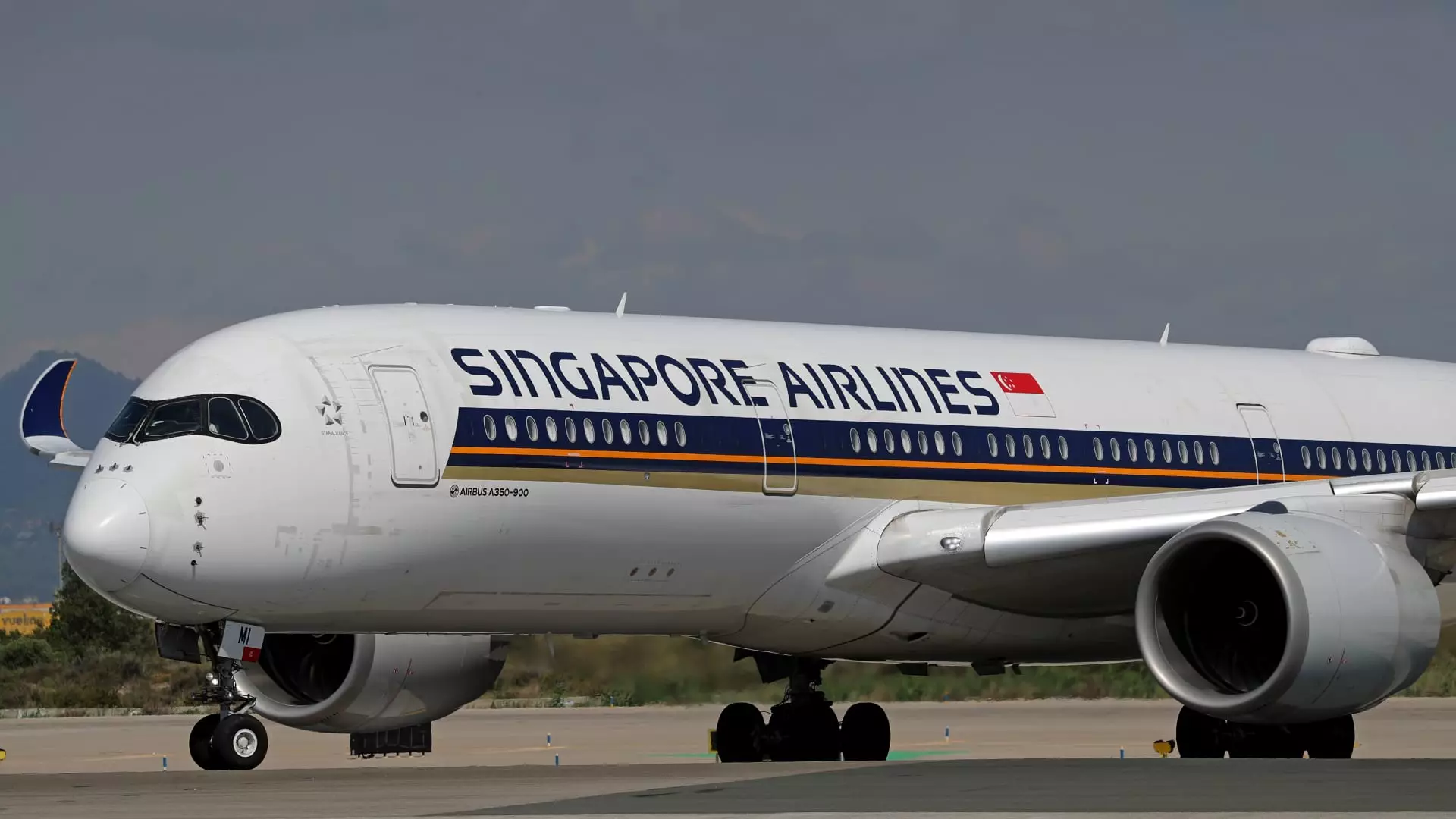Singapore Airlines (SIA) recently reported a substantial decline in its net profit for the first six months of the fiscal year, spanning from April to September. The airline’s net profit slumped nearly 50%, bringing it down to SG$742 million (approximately $559 million), a marked drop from SG$1.44 billion in the same timeframe the previous year. This significant downturn can be attributed to heightened competition and diminished yields, impacting the company’s profitability despite experiencing a slight rise in revenue.
Operating profits also reflected a bleak picture, decreasing by about 48.8% to SG$796 million from SG$1.55 billion. Conversely, revenue increased by 3.7%, totaling SG$9.5 billion, indicating that while sales saw a growth trajectory, underlying profitability was undermined by external market pressures.
The immediate reaction of the stock market to SIA’s profit report was negative, as shares fell by as much as 6.2% at the opening on Monday before somewhat stabilizing to a decline of 3.57%. These fluctuations underscore the concerns investors harbor regarding the airline’s financial health in an increasingly competitive landscape. Maintaining an interim dividend of 10 Singapore cents per share, SIA faces the challenge of balancing shareholder expectations while addressing declining profitability.
During a briefing, SIA’s Chief Commercial Officer, Lee Lik Hsin, pointed out that intensified competition on a global scale is evident, particularly as numerous airlines return to pre-COVID capacity levels. Although passenger traffic rose by 7.9% year-on-year, this increase lagged behind the airline’s own passenger capacity expansion of 11%. Consequently, the passenger load factor—an important metric measuring the efficiency in passenger capacity usage—dipped by 2.4 percentage points year-on-year to 86.4%. Such metrics reveal an imbalance in supply and demand dynamics, raising concerns about the sustainability of SIA’s profitability.
Despite the challenges presented by the competitive environment, SIA remains committed to pursuing capacity growth, as noted by Lee. The airline indicated that forecasts for air travel demand in the second half of the fiscal year remain optimistic; however, it is crucial to acknowledge that competition is likely to intensify.
In a move that reflects SIA’s commitment to upgrading its fleet amidst these challenges, the airline recently announced a significant SG$1.1 billion investment in a cabin retrofit program for its 41 long-range and ultra-long-range Airbus A350 jets. This modernization initiative is designed to enhance customer experience and is set to see the first retrofitted aircraft enter service by 2026, with the entire program expected to be completed by 2030. Such strategic investment may help bolster SIA’s competitive stance in the long term, but addressing immediate profitability concerns remains a pressing priority.
While Singapore Airlines has solidified a reputation as a leading global carrier, the ongoing challenges posed by competition and market dynamics necessitate a careful reevaluation of strategy to safeguard profitability and ensure sustainable growth in the future.

